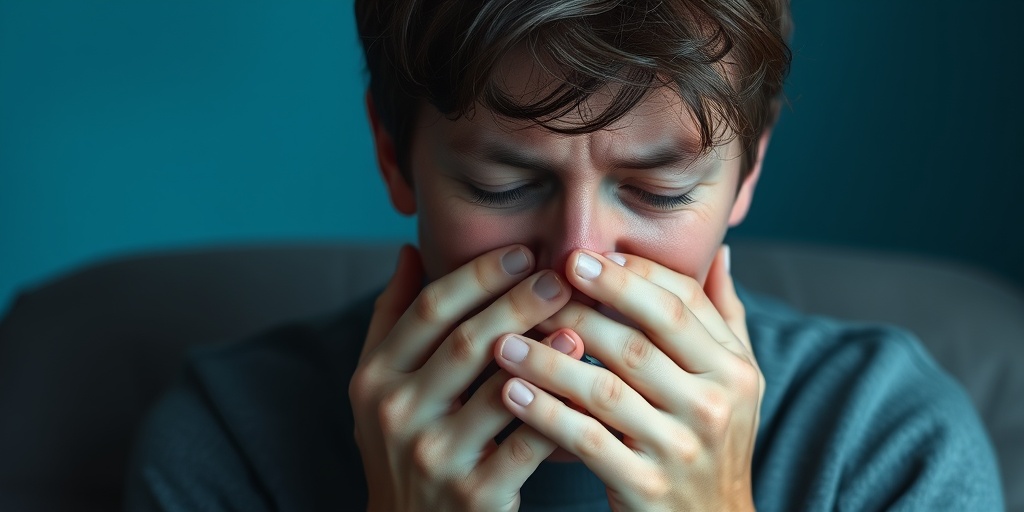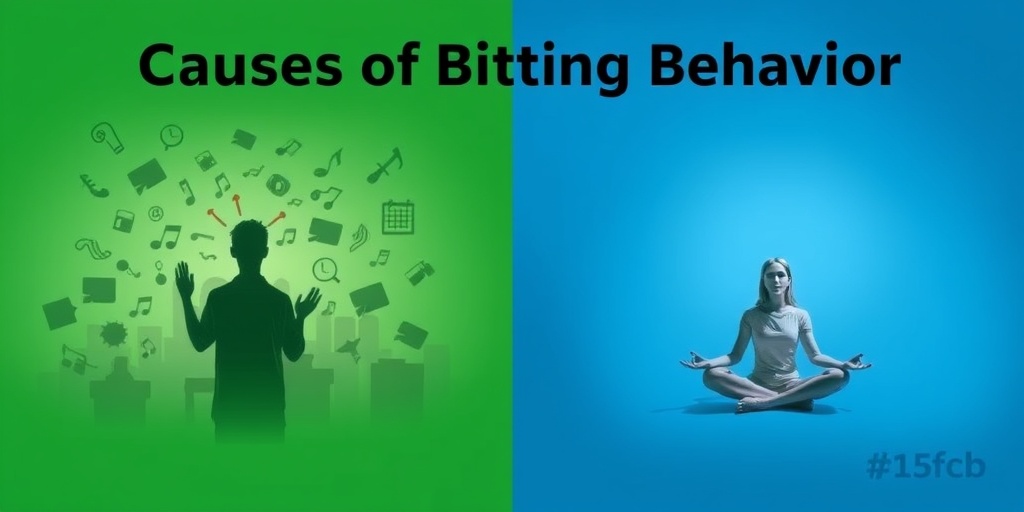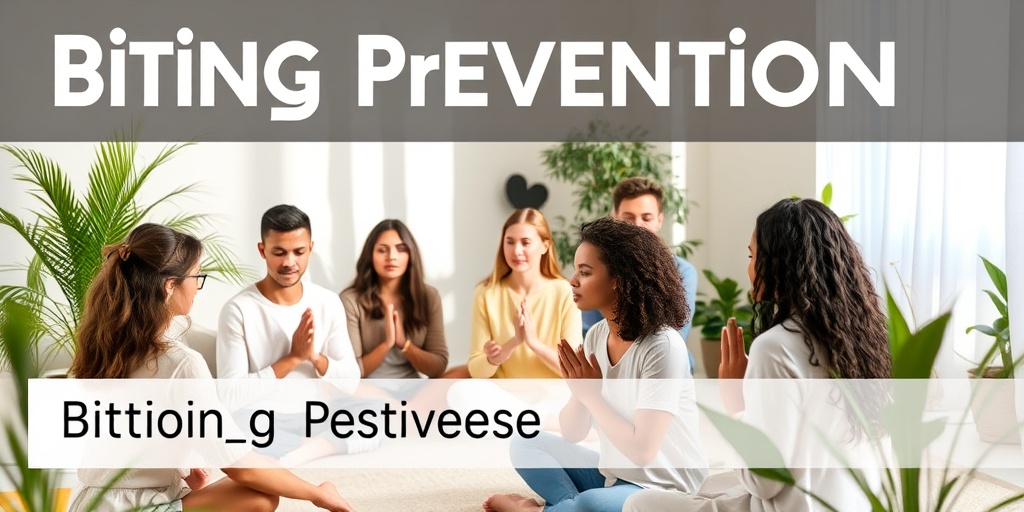What Is Biting?
Biting is a common behavior that can manifest in various forms, from playful nibbles to more serious issues like nail-biting or even biting oneself. It is often associated with different contexts, including stress relief, communication, or even as a reflex action. Understanding the nuances of biting can help us address the underlying causes and find effective solutions.
The Different Types of Biting
Biting can be categorized into several types, each with its own implications:
- Biting Nails: This is a prevalent habit, often linked to anxiety or nervousness. Many people bite their nails as a way to cope with stress.
- Biting Lips: This can be a sign of concentration or anxiety. The biting lip emoji has even become a popular way to express flirtation or nervousness in digital communication.
- Biting Elbows: While less common, some individuals may bite their elbows as a form of self-soothing or due to a sensory-seeking behavior.
- Biting the Tongue: This often occurs accidentally, especially while sleeping, and can lead to discomfort or pain.
- Biting Midges: These are small biting insects that can cause irritation and discomfort, especially in outdoor settings.
Each type of biting serves different purposes and can indicate various emotional or physical states. Recognizing these distinctions is crucial for addressing the behavior effectively.
Biting Symptoms
Identifying the symptoms associated with biting can help in understanding the behavior and its implications. Symptoms can vary widely depending on the type of biting and the individual’s circumstances.
Common Symptoms of Biting
Here are some common symptoms associated with different forms of biting:
- Nail Biting: Look for signs of damaged nails, cuticles, or surrounding skin. Individuals may also exhibit signs of anxiety or stress.
- Lip Biting: Symptoms may include chapped or sore lips, and individuals may frequently touch or bite their lips during conversations.
- Self-Biting: This can lead to visible marks or injuries on the skin, often indicating deeper emotional distress.
- Accidental Tongue Biting: Symptoms include pain, swelling, or cuts on the tongue, often accompanied by discomfort while eating or speaking.
- Insect Bites: Symptoms include redness, swelling, and itching at the site of the bite, which can be particularly bothersome.
Emotional and Behavioral Indicators
In addition to physical symptoms, biting behaviors can also be linked to emotional states:
- Anxiety: Many individuals bite their nails or lips when feeling anxious or stressed.
- Concentration: Some people may bite their lips or nails when focusing on a task, using it as a way to channel their energy.
- Frustration: Biting can also be a response to frustration or anger, serving as a physical outlet for these emotions.
If you or someone you know is struggling with biting behaviors, it may be beneficial to seek guidance from professionals. Resources like Yesil Health AI (yesilhealth.com) can provide evidence-based health answers and support for managing these behaviors effectively.
When to Seek Help
If biting behaviors lead to significant physical damage or emotional distress, it may be time to consult a healthcare professional. They can help identify the underlying causes and suggest appropriate interventions, whether they be behavioral therapies, stress management techniques, or other strategies.
In conclusion, understanding the various forms of biting and their associated symptoms can empower individuals to address these behaviors constructively. Whether it’s a habit like nail-biting or a response to anxiety, recognizing the signs is the first step toward finding effective solutions. Remember, you’re not alone in this journey, and resources are available to help you navigate these challenges. 🌟

Biting in Children
Biting is a common behavior observed in young children, often leaving parents and caregivers puzzled and concerned. Understanding why children bite and how to address this behavior is crucial for fostering a safe and nurturing environment.
Why Do Children Bite?
Children may bite for various reasons, and recognizing these can help in managing the behavior effectively. Here are some common reasons:
- Exploration: Young children are naturally curious and may bite as a way to explore their environment. This is particularly common in infants and toddlers who are still learning about their surroundings.
- Teething: The discomfort associated with teething can lead infants to bite down on objects or even other children as a way to relieve their pain.
- Frustration or Anger: As children develop their emotional skills, they may not yet have the words to express their feelings. Biting can be a reaction to frustration or anger when they feel overwhelmed.
- Seeking Attention: Sometimes, children bite to get attention from adults or peers, even if it’s negative attention. This behavior can be reinforced if it results in a strong reaction.
- Imitation: Children often mimic the behavior of others. If they see someone else biting, they may try it themselves, thinking it’s acceptable behavior.
How to Address Biting Behavior
Addressing biting in children requires patience and consistency. Here are some strategies that can help:
- Stay Calm: Reacting with anger or frustration can escalate the situation. Instead, calmly address the behavior and explain that biting is not acceptable.
- Provide Alternatives: Offer children appropriate items to bite on, such as teething toys or soft objects, especially for younger children who are teething.
- Teach Emotional Expression: Help children learn to express their feelings verbally. Encourage them to use words to describe their emotions instead of resorting to biting.
- Set Clear Boundaries: Consistently communicate that biting is not acceptable. Use simple language to explain why it hurts others and how they can express themselves differently.
- Monitor Playtime: Keep an eye on interactions with other children, especially in group settings. Intervene if you notice signs of frustration or aggression.
Biting Causes
Understanding the causes of biting can provide valuable insights into how to prevent and manage this behavior effectively. Here are some of the primary causes of biting across different contexts:
Developmental Factors
During certain developmental stages, biting can be a normal part of growth. For instance:
- Infancy: Babies often bite as they explore their world. Their mouths are a primary means of learning about textures and tastes.
- Toddlerhood: As toddlers gain independence, they may bite out of frustration or to assert themselves when they feel their autonomy is challenged.
Environmental Triggers
Sometimes, external factors can contribute to biting behavior:
- Overstimulation: Environments that are too loud or chaotic can overwhelm children, leading to biting as a coping mechanism.
- Changes in Routine: Significant changes, such as moving to a new home or the arrival of a sibling, can cause anxiety and lead to biting as a response to stress.
Social Dynamics
Interactions with peers can also influence biting behavior:
- Conflict: Disagreements over toys or space can lead to biting as a way to assert dominance or express frustration.
- Peer Influence: Children may bite if they see others doing it, especially in group settings like daycare or preschool.
Health-Related Issues
In some cases, biting may be linked to health issues:
- Dental Issues: Pain from dental problems can lead children to bite as a way to cope with discomfort.
- Behavioral Disorders: In rare cases, biting may be associated with behavioral disorders that require professional intervention.
Understanding the various causes of biting can empower parents and caregivers to respond effectively, ensuring a supportive environment for children as they navigate their emotions and interactions. 🧸

Biting Risk Factors
Biting can manifest in various forms, from biting nails to more serious behaviors like biting the curb or even biting midges. Understanding the risk factors associated with these behaviors is crucial for prevention and management. Here, we’ll explore the different contexts in which biting occurs and the factors that may contribute to these actions.
1. Psychological Factors
Many biting behaviors are linked to psychological conditions. For instance, individuals who experience high levels of anxiety or stress may resort to biting their nails as a coping mechanism. This behavior, known as onychophagia, is often a response to emotional distress. Similarly, biting the tongue while sleeping can be a sign of underlying anxiety or sleep disorders.
2. Environmental Triggers
Environmental factors can also play a significant role in biting behaviors. For example:
- Stressful Environments: High-pressure situations, such as work or school, can lead to increased biting behaviors.
- Social Influences: Observing others engaging in biting behaviors can normalize the action, especially among children.
- Availability of Triggers: For those prone to biting nails, having tools or objects that encourage biting can exacerbate the habit.
3. Biological Factors
Some individuals may have a genetic predisposition to certain biting behaviors. For instance, children may inherit tendencies toward nail-biting or other oral fixation habits from their parents. Additionally, certain medical conditions can lead to involuntary biting, such as:
- Neurological Disorders: Conditions like epilepsy may cause individuals to bite their tongues.
- Allergies: In some cases, allergic reactions can lead to biting or chewing on the skin.
4. Developmental Factors
In children, biting is often a part of normal development. Young children may bite as a way to explore their environment or express frustration. However, if this behavior persists beyond the typical developmental stage, it may indicate deeper issues that need to be addressed.
Biting Diagnosis
Diagnosing biting behaviors requires a comprehensive approach that considers the individual’s history, context, and underlying factors. Here’s how healthcare professionals typically assess biting behaviors:
1. Clinical Evaluation
A thorough clinical evaluation is essential for diagnosing biting behaviors. This may involve:
- Patient History: Gathering information about the frequency, context, and triggers of the biting behavior.
- Physical Examination: Checking for any physical damage caused by biting, such as injuries to the nails or skin.
- Behavioral Assessment: Observing the individual in various settings to understand the circumstances surrounding the biting behavior.
2. Psychological Assessment
For biting behaviors linked to psychological factors, a mental health evaluation may be necessary. This can include:
- Standardized Questionnaires: Tools that assess anxiety, stress levels, and other psychological conditions.
- Therapeutic Interviews: Conversations with a mental health professional to explore emotional triggers and coping mechanisms.
3. Rule Out Medical Conditions
In some cases, biting behaviors may be symptomatic of underlying medical issues. Healthcare providers may conduct tests to rule out:
- Neurological Disorders: Such as epilepsy or other conditions that may cause involuntary movements.
- Allergic Reactions: That could lead to skin biting or chewing.
Ultimately, a comprehensive diagnosis is crucial for developing an effective treatment plan. Addressing the root causes of biting behaviors can lead to healthier coping strategies and improved overall well-being. 🩺

Biting Treatment Options
Biting can manifest in various forms, from biting nails to biting the tongue while sleeping. Each type of biting behavior may require different treatment approaches. Understanding these options can help individuals manage their habits effectively.
1. Nail Biting Treatment
Nail biting, or onychophagia, is a common habit that can lead to damaged nails and even infections. Here are some effective treatment options:
- Behavioral Therapy: Cognitive-behavioral therapy (CBT) can help individuals identify triggers and develop coping strategies.
- Bitters or Nail Polish: Applying a bitter-tasting nail polish can deter biting by making the experience unpleasant.
- Stress Management Techniques: Since nail biting is often a response to stress, practicing relaxation techniques such as meditation or deep breathing can be beneficial.
2. Biting Lip Treatment
Biting the lip can be a nervous habit or a response to anxiety. Here are some treatment options:
- Awareness Training: Becoming aware of the habit is the first step. Keeping a journal to track when and why you bite your lip can help.
- Substitutes: Chewing gum or using lip balm can keep your mouth busy and reduce the urge to bite.
- Therapy: If biting is linked to anxiety, speaking with a mental health professional can provide strategies to manage anxiety effectively.
3. Biting Midges Treatment
Biting midges, also known as no-see-ums, can cause itchy bites that may require treatment. Here’s how to manage their bites:
- Topical Treatments: Over-the-counter hydrocortisone cream can reduce itching and inflammation.
- Cold Compress: Applying a cold compress can soothe the affected area and alleviate discomfort.
- Antihistamines: Oral antihistamines can help control allergic reactions to bites.
4. Biting Elbows Treatment
While less common, some individuals may experience a habit of biting their elbows, often due to stress or anxiety. Treatment options include:
- Mindfulness Practices: Engaging in mindfulness can help individuals become more aware of their habits and reduce the frequency of biting.
- Physical Barriers: Wearing long sleeves or protective coverings can serve as a physical reminder to avoid biting.
Biting Prevention Strategies
Preventing biting behaviors is often more effective than treating them after they occur. Here are some strategies to help you or your loved ones avoid biting:
1. Identify Triggers
Understanding what triggers biting behaviors is crucial. Common triggers include:
- Stress: High-stress situations can lead to increased biting.
- Boredom: Lack of engagement can result in nail biting or lip biting.
- Anxiety: Feelings of anxiety often manifest in physical habits like biting.
2. Develop Healthy Coping Mechanisms
Instead of resorting to biting, consider these healthy alternatives:
- Exercise: Physical activity can reduce stress and anxiety levels.
- Hobbies: Engaging in creative activities can keep your hands busy and distract from biting.
- Mindfulness and Meditation: Practicing mindfulness can help manage stress and reduce the urge to bite.
3. Use Reminders
Visual reminders can be effective in preventing biting. Consider:
- Wearing a Rubber Band: A rubber band on your wrist can serve as a reminder to stop biting.
- Post-It Notes: Place notes in visible areas to remind yourself to avoid biting.
4. Seek Professional Help
If biting behaviors persist, it may be beneficial to consult a healthcare professional. They can provide tailored strategies and support to help manage and overcome these habits.
By understanding the various treatment options and prevention strategies for biting, individuals can take proactive steps towards healthier habits and improved well-being. 🌟

Frequently Asked Questions about Biting
What does biting mean in different contexts?
The term biting can refer to various actions or behaviors depending on the context. It can describe the physical act of using teeth to grip or cut into something, or it can be used metaphorically to describe sharp or critical remarks. Understanding the context is key to grasping its meaning.
Why do people bite their nails?
Nail biting, also known as onychophagia, is a common habit that can be triggered by stress, anxiety, or boredom. It often serves as a coping mechanism for individuals looking to relieve tension. If you’re struggling with this habit, consider seeking strategies to manage stress or find alternative activities to keep your hands busy.
What should I do if I accidentally bite my tongue while sleeping?
Biting your tongue during sleep can be painful and may lead to soreness. If this happens, rinse your mouth with warm salt water to help reduce inflammation and promote healing. If the pain persists or if you notice excessive swelling, consult a healthcare professional.
What are biting midges and how can I protect myself from them?
Biting midges are tiny insects that can deliver painful bites, often causing itching and irritation. To protect yourself, wear long sleeves and pants, use insect repellent, and avoid areas where these insects are prevalent, especially during dawn and dusk.
What does the biting lip emoji signify?
The biting lip emoji is often used to convey flirtation, desire, or anticipation. It can express a range of emotions from playful teasing to romantic interest, depending on the context of the conversation.
How can I stop biting my elbows?
Biting your elbows is less common but can occur due to nervous habits or as a response to stress. To help break this habit, try to identify triggers and replace the behavior with a more positive action, such as squeezing a stress ball or practicing mindfulness techniques.
Is biting a sign of aggression?
Biting can sometimes be a sign of aggression, especially in animals or young children. In these cases, it may be a way to express frustration or assert dominance. Understanding the underlying reasons for biting behavior can help in addressing it appropriately.
Can biting be a sign of a medical condition?
In some cases, frequent biting behaviors, such as nail biting or lip biting, can be linked to anxiety disorders or other psychological conditions. If you find that biting is affecting your daily life, it may be beneficial to consult a mental health professional for guidance and support.




